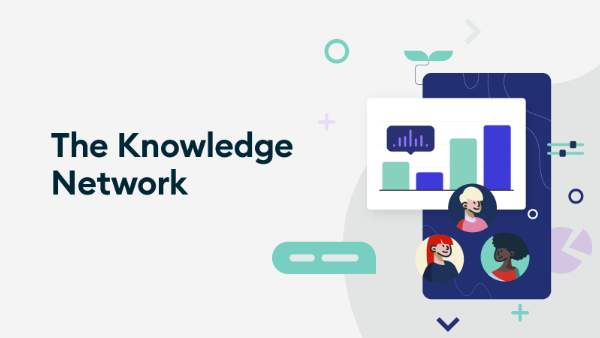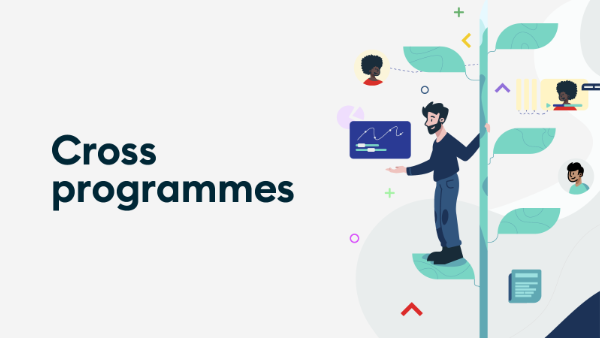Sales: Understanding Buyer Personas

Do you know who your sales buyer personas are? And if so, how much do you know about them?
In the sales function, it’s important to know your buyer when targeting customers and crafting messages. Your phone calls, face-to-face interactions, and emails will become much more valuable if you take the needs, fears, and goals of each of your current and prospective customers into consideration.
But this doesn’t mean buyers are cut from the same cloth, because, when you think about it, the priorities of a VP of sales and an operations manager would be very different even if they work in the same company.
In fact, advisory firm Corporate Executive Board notes a buying decision requires the input of 5.4 decision-makers, champions, and influencers on average - that’s a whole lot of different perspectives, ideas, and knowledge to consider.
This is why buyer personas are so important in sales, as they will help you better understand your customers, generate more pipeline, and increase revenue.
Let’s dive in.
The buyer personas you may meet
If you can identify the personality traits - as well as the professional and personal desires - which your actual prospects resemble, you will be able to plan your actions to meet their personal buying styles and criteria, and win more sales in the process.
Here are a few buyer personas you are likely to come across:
- Commanding (decisive): This buyer solves problems in a decisive, active, and assertive manner. They’re very proactive, results driven, and want to win
- Collaborative (consensus): This buyer likes to solve problems with other people. They’re adaptable, diplomatic, tactful, and deliberative
- Outgoing (relationship builder): Social interaction and engagement is important to this buyer. They’re enthusiastic, a creative problem solver, a team player, and (naturally) a relationship-builder
- Objective (sceptical): This buyer is a reserved, critical thinker. They won’t embellish and don't want you to either. It takes a while for them to develop trust with people, which could be beneficial for you if you put the time and effort in
- Exacting (analytical): An analytical buyer is cautious. They follow rules, procedures, and established standards, but most importantly are comprehensive problem solvers because they examine problems from all different angles
- Easygoing (innovator): Innovators develop strategies and ideas independent of rules. They’re informal, solve problems creatively, and think boundaries are for testing, pushing, and crossing
How to create buyer personas
As you create buyer personas for your business, you will need to consider a range of individuals:
- Your current customers (both satisfied and dissatisfied)
- Any prospects in your sales and marketing pipelines
- Those that seem to fit the profile but aren’t aware of your organisation
The following methods will help when developing buyer persona profiles:
- Interview current customers to understand their buyer intent and what they like most about your products and services
- Research within your contact database to see how customers and leads consume your content, and then see if you can identify any trends
- Analyse your sales team's feedback on the most active and highly converting leads
- Review your best client deals and analyse their buyer's journey touchpoints before they became your customers
- Use form fields on your website to capture important persona information, so that you can analyse it and enhance your customer experience
It’s important to be realistic when compiling data to create a persona. Find any recurring themes and speculate how they might affect both personal and professional areas of a prospective customer’s life.
How are buyer personas used by marketing and sales professionals?
At its most basic level, a comprehensive buyer persona allows the sales and marketing functions to create messaging that resonates with your target audience.
But if you are to use buyer personas to advance and enhance your sales efforts, segmentation is key.
For example, you might decide to segment your content marketing promotions or email list based on what you know about the various personas that may benefit from your offerings.
Once you have segmented these offerings, you can layer buyer personas with other important data such as their typical buying process, their company’s sales cycles, and any other key traits.
If you take real circumstances and data into account when creating buyer personas, you can tailor your sales and marketing messages to meet your prospect or lead in the right way, the right place, and at the right time.
Planning your buyer personas
First and foremost, your sales function will need to identify the information you need to create a buyer persona template.
Trish Bertuzzi, in The Sales Development Playbook outlines the necessary sections to address for prospect personas:
- Target title: What role does your prospect currently hold? Is your prospect a VP of Sales? A Chief Marketing Officer? A Sales Enablement Manager?
- Role and responsibility: What does the job entail for each of these positions?
- Challenges and obstacles: What are some of the major challenges specific to each role?
- Professional success metrics: What are the Key Performance Indicators (KPIs) for different positions? For sales, performance is usually measured by meetings, revenue, year-over-year growth, margins, and P&L. Whereas marketing tends to measure success according to impressions and views, as well as the number of marketing qualified leads (MQLs) that were created, converted and have subscribed.
- Risks and fears: What are some risks and fears that relate to each person’s position? For example, a VP of Sales might worry because others only last in this position for 18 months, so they may feel as though they have little time to make an impact on the bottom line.
- Consequences of the status quo: You need to know what needs to be changed to be able to make an impact. What are the old tactics that aren’t working? Are the sales and marketing team encountering recurring issues?
- The big win they deliver: How does each position contribute to the success of the company? Do they generate pipeline and revenue? Do they facilitate alignment?
Benefits of buyer personas
1) Better understanding of your ideal customer
Buyer personas help you gain a greater knowledge of your existing and potential clients.
You’ll learn more about their preferences, habits, demographics, pain spots, preferred purchasing methods, as well as other details.
If you know your clients on a deeper level, you’ll better connect with them in the process.
2) Increased marketing return on investment (ROI)
Buyer personas can provide a higher return on investment - if they’re created correctly.
They will help you make smarter judgments, like where you should focus your marketing efforts for example.
This means your marketing will be tailored towards your buyer(s), and this will result in a higher cost-per-customer return because your advertising will directly target individuals most likely to become customers.
3) Targeted/segmented marketing
Buyer personas allow you to segment marketing campaigns - which is a huge benefit as you can deliver tailored, targeted material to each persona if you wish.
You will see better results and likely gain long-term partnerships as the result of this personalisation. You can do this by:
- Communicating to them in their own language and interests
- Distributing through the channels of their choice
- Making each buyer persona's content unique
4) Increased efficiency
If you use buyer and sales personas, it will make your marketing activities more efficient. Your efforts will inevitably hit the proper target, and therefore result in greater sales without additional effort or expense.
Using buyer personas effectively will help you save time, money, and energy.
5) Enhanced cooperation with your sales team
Customer personas are a fantastic sales tool to have up your sleeve, as they give your sales team a clear idea of who they need to/are targeting.
This means the sales team can connect with their audience more effectively; using their own language and tone, as well as their interests. And this means by phone, email, or face-to-face too.
6) Overcome concerns
If you know and understand a client’s pain spots, you will be able to better anticipate and overcome objections. This means you can tailor your content and prepare your sales staff accordingly.
7) Customer-centric marketing
Buyer and customer personas will help you gain better knowledge of a customer’s buying decision. You need to know who you’re talking to if you want to thoughtfully address their requirements and build an experience and relationship that speaks to individuals.
8) Detect negative personas
Every individual has a certain likelihood of converting and purchasing your product.
Negative buyer personas will therefore help you understand which groups of individuals are the least likely to convert. These often include individuals who you would consider not to be a good fit for your company.
By conducting interviews and gathering data on these types of consumers, it will help you weed out the necessary characteristics to establish your negative buyer personas.
To hit targets, create relationships, grow your business, and boost revenue, your sales function needs to understand the people they are selling to.
Once you understand the different nuances of your clients - both personally and professionally - you’ll be unstoppable.


